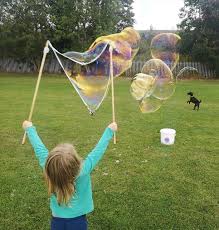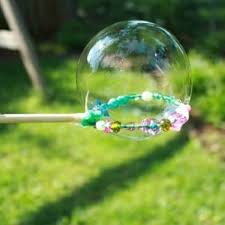Maths Summer 3
Year 3 Maths
Addition and Subtraction
Addition Pyramids
|
16 |
|||
|
7 |
9 |
||
|
3 |
4 |
5 |
|
Add the two numbers next to each other to get the answer above e.g.
3 + 4 = 7
4 + 5 = 9
7 + 9 = 16
Generate a 3 digit number for the bottom and work your way up the pyramid. You could also get a grown up to generate one missing some numbers so that you have to fill in the missing numbers e.g.
|
|
|||
|
6 |
9 |
||
|
5 |
|
8 |
|
5 + _ = 6 (as above)
_ + 8 = 9
6 + 9 =
You could make this easier/harder by the amount of boxes you use. You could create ‘Pyramids’ with 3/6/10 boxes using addition. Can you also use subtraction to work backwards?
| Create your Pyramid |
Properties of Shape Including Horizontal and Vertical Lines and Symmetry
How to draw a face?
You look at people’s faces every day, but have you ever taken time to try to draw them? Use this useful guide to help you to draw a family/friend’s face. There is a lot more maths involved than you would first think. Can you think of any other maths involved?
|
|
|
|
|
|
|
|
|
|
|
|
|
|
Finally Colour |
Throughout the process ask yourself the following questions...
- Were you accurate when drawing your lines? Could you measure those lines once they are drawn? Could you predict how long the lines will be in cm and mm?
- Can you remember which lines are vertical or horizontal?
- Can you find any right angles where the vertical and horizontal lines meet? Which parts of the face you have drawn are symmetrical?
- Since drawing and then colouring have you noticed any differences in symmetry? Are both sides exactly the same in colour?
Worded Problems
Mysterious Maths at Sea
- Captain George has a crew of 32, 29 of which own a parrot. How many more pirates are there than parrots?
- Captain Big Beard is expecting to reach the shore at half past 2 in the afternoon. Record this on a 24 hour digital clock.
- Along the shoreline are 14 crabs. Each crab has 10 legs. How many legs are there in total?
- There are 36 hermit crabs along the beach and 8 shiny new shells. How many crabs will not be able to find a new shell?
- Alex buys a portion of chips for 75p. A large portion is 35p more. How much will it cost him in total to buy the large portion?
- There are 38 people swimming in the ocean. 19 swimmers get too cold and get out and 15 more people get in. How many people are swimming in total now?
- Sammy has a 100ml bottle of water. She drinks 60ml. How much does she have left?
- A fisherman needs to catch 100 fish a day. So far he has caught 46. How many more does he need to catch?
- Jodie gets to the beach at 10am. She stays for 2 and a half hours. At what time does she leave?
- Paul buys an ice cream for 86p. He pays with a pound coin. How much change does he receive back?
Now you could make up some of your own seaside related worded problems and then try to answer them (or get a friend/ family member to answer them).
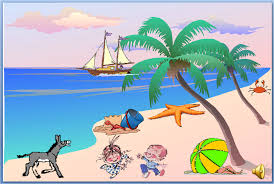
Outdoor Maths Ideas
- Create a hopscotch using times table knowledge.
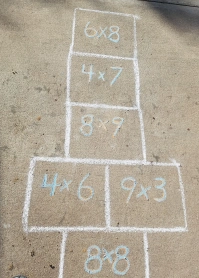
- Use chalk to create a hundred square (you could even make this into a giant snakes and ladders).
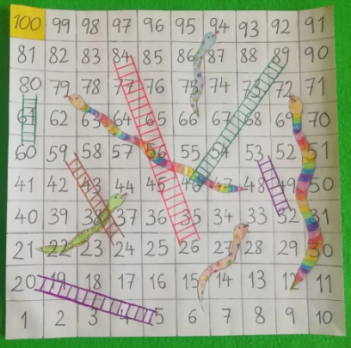
- Have you got any old bottles/tin cans in your recycling bin? Could you use these to make a skittle game? Add labels with questions on e.g 6 x 3 = __. For every skittle that you knock down you need to answer the question correctly to get the point.
|
|
|
|
|
|
|
- Use properties of shape knowledge to create your own shape bubble wand using straws/ twigs/ old branches (get creative). Get a grown up to help you to create bubble mixture using washing up liquid, glycerine and water or alternatively use a pre made mix. Add a label to your wand with a list of its properties.
